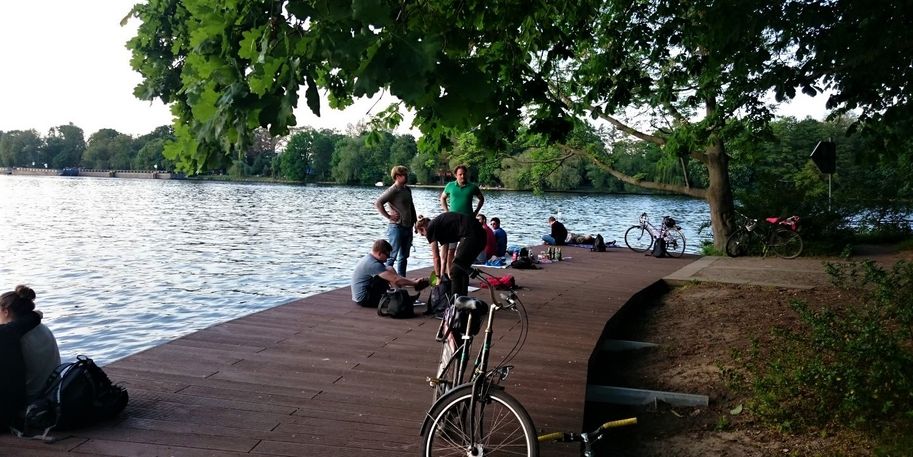Ensure safe bathing areas
Public bathing areas are becoming increasingly popular alternatives to public pools. According to the EU Bathing Water Directive, however, bathing water quality is monitored only once a month. This means sudden pollution of waters cannot be detected. This is the starting point of the FLUSSHYGIENE (Hygiene in Rivers) project that started in June 2015. In this project, inter 3 analyses possible conflicting interests using the Spree in suburban Berlin as an example, where the opening of public bathing areas is envisaged.
One water body – many parameters: conflict and constellation analysis
The project aims at developing tools which can detect and predict sudden pollution and its diffusion in a river. Before a water body can be used for bathing, however, various, sometimes conflicting, interests and complex legal, structural, physical and other conditions have to be taken into consideration. Therefore, inter 3 conducts a conflict and constellation analysis which allows for identifying and clustering different stakeholders, their particular interests as well as framework conditions. Stakeholders can be residents, interest groups, urban planners, companies or academia, all of them acting within certain legal, political, economic and infrastructural spheres.
From analysis to practical guidelines: a German comparison
Comparing them to the Havel, Isar/ Ilz, Rhine/ Mosel and Ruhr Rivers, results are validated and generalized. This comparison provides the basis for valid conclusions on strategic (political, legal, organizational, communicative, technological, structural and physical) starting points for realizing new bathing areas in a conflict free, hygienically safe way and efficient with regards to costs and benefits. Output will include a list of recommended actions for responsible actors in Berlin as well as a general check list for the opening of bathing areas on German rivers.

![[Translate to English:] Porträt von Dr. Susanne Schön](/fileadmin/_processed_/e/4/csm_21c962_ls_weiss-50_6f400480b9.jpg)
![[Translate to English:] [Translate to English:]](/fileadmin/_processed_/3/f/csm_20180107_gefoerdert_vom_bmbf_deutsch_64c5d2497c.jpg)